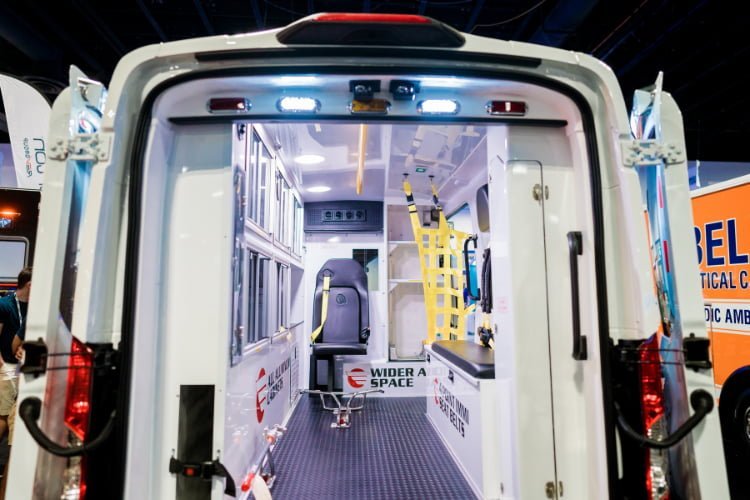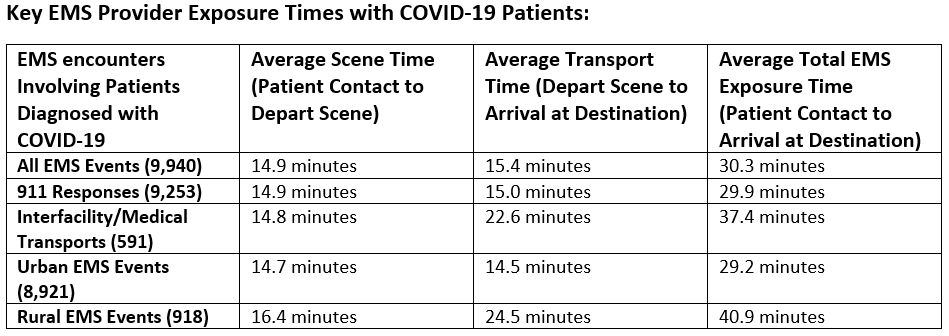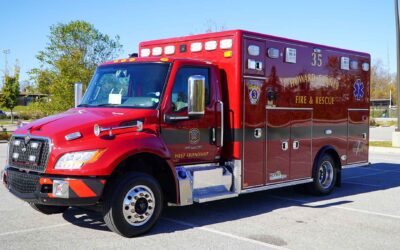
Photo/Adam Mason
ESO, a leading data and software company serving emergency medical services (EMS), fire departments, hospitals, and state EMS offices shared insights from more than 9,900 EMS encounters for patients diagnosed with COVID-19 that occurred between October 1-November 30, 2020. Data are from the ESO Data Collaborative. The data show EMS personnel, on average, spend more than 30 minutes with each COVID-19 patient, of which an average of 15 of these minutes take place during the transport period of an encounter in the back of an ambulance, often a confined, poorly ventilated space.
According to industry standards, the typical Type II (van-based) ambulance is 186 cubic feet, while Type III (modular) ambulances are 350 cubic feet. The typical hospital room is more than 900 cubic feet. Additionally, increases in COVID-19 cases and deaths continue in many communities across the country, including a surge in 911 calls related to COVID-19 that hover close to 1,200 a day. Moreover, despite recommendations from the Center for Disease Control and Prevention’s (CDC) Advisory Committee on Immunization Practices (ACIP), at least 10 states are currently likely to exclude EMS personnel from the highest priority access to the COVID-19 vaccine.
“Based on our data, we see that EMS providers are spending substantial amounts of time with COVID-19 patients in enclosed spaces, often before knowing that the patient is positive,” said Dr. Brent Myers, Chief Medical Officer for ESO. “In urban areas, EMS personnel spend about 30 minutes with each patient, equally divided between on-scene and transport times. There are even greater total exposure times in rural areas and when transferring patients between healthcare facilities. These data provide support for the CDC ACIP, American College of Emergency Physicians, and National Association of EMS Physicians recommendations to include EMS personnel in the highest priority group for vaccination. Failure to do so will put both the provider and the community at unnecessary risk.”

“These data confirm EMS personnel are facing significant risk in treating COVID-19 patients, both in terms of space and exposure,” added Dr. Myers. “We hope this accelerates the commitment by all Federal and state parties to ensure EMS personnel receive the COVID-19 vaccine as early as possible.”




